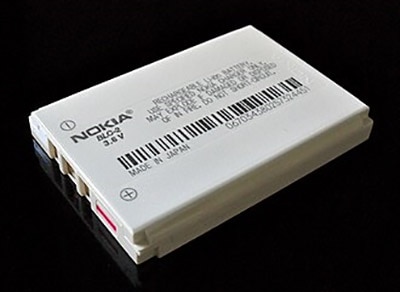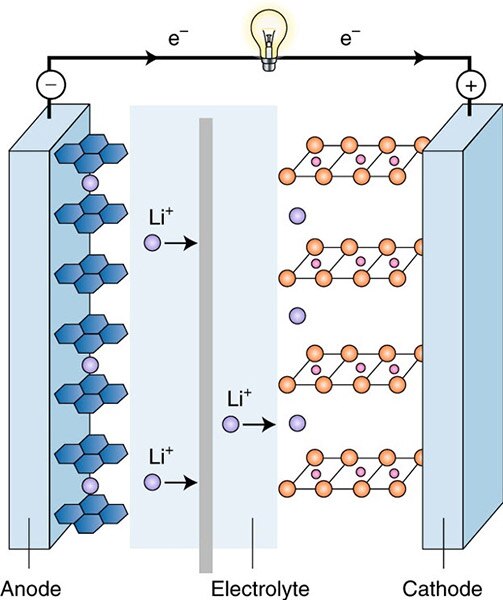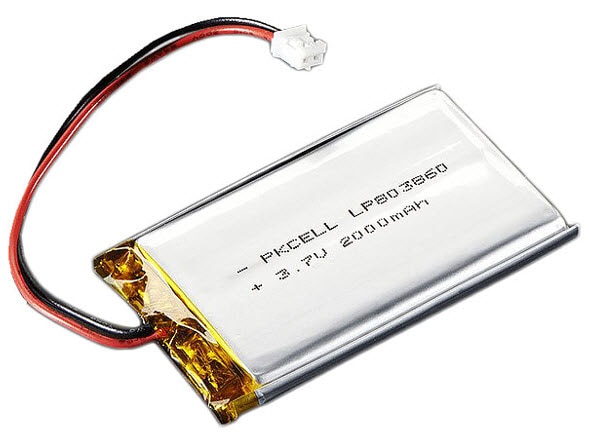Diving into Lithium-Ion Batteries
2024-05-31 | By Antonio Velasco
In today's world, you can find lithium-ion batteries everywhere. In phones, in your smart home devices, and even in electric vehicles. This specific battery type is widely popular thanks to its high power, slim and light frame, and the ability to recharge it. Let's look into how it works and how to pick out the right battery.

How Do Li Batteries Work?
Everybody knows what these batteries are, but how do they work? If you've taken a chemistry class, this deals directly with electrochemistry and essentially forms an electrochemical cell.
An anode side (or the negative side) is made with graphite, allowing for lithium ions to be inserted and extracted. When the battery is discharged, lithium ions go from the anode side to the cathode side. A cathode side (or the positive side) is made with lithium oxide, such as lithium cobalt oxide or lithium manganese oxide, which accepts the lithium ions from the anode and releases electricity.
What transfers ions between the anode and cathode is an electrolyte, such as a dissolved salt. This serves as the medium to allow lithium ions to move. The anode and cathode here cannot touch as we need to be able to control the flow and prevent a short circuit.

You can see in the diagram how this is set up. When lithium ions move from the anode to the cathode, electrons are also released in order to compensate for the lost lithium ions. This in turn creates the electrical current if we redirect the electrons to a circuit and flow it to the direction of the cathode.
When we charge a battery, lithium ions move back from the cathode to the anode since electrons are being added back. This creates the storage capacity. What makes lithium-ion batteries so useful is that this process can be repeated thousands and thousands of times since the anode and cathode will not degrade as easily.
The biggest improvement that people are working on now is changing the dissolved liquid electrolyte into a solid-state electrolyte, thus making the batteries more stable and safer.
Let's take a look into the lingo of lithium-ion Batteries. This can be a little confusing as you'll often receive batteries with ratings that aren't in plain English or numbers.
What Does "S" or "P" Mean on An Li Battery Label?
When picking out a lithium-ion battery, it's important to choose the right one. One rating you might see often is the "S" rating, showing up as 2S, 3S, 4S, or even 6S. This represents the number of cells connected in series on a battery, hence S. When cells are added in series, this increases the voltage of the battery. For example, a battery with a rating of 4S can output twice as much voltage as a battery with a rating of 2S, provided that the cells are rated the same.
Similarly, there is a "P" rating on some batteries, which represents cells in "parallel." When connecting cells in parallel, the capacity increases rather than the voltage, providing a different usage/application as opposed to a battery with an "S" rating.
What Does "C" Mean on An Li Battery Label?
C relates to the discharging and charging rate of a battery. It is essentially a ratio that represents how fast such a battery can charge/discharge. This is calculated by taking the current of a battery and dividing it by its capacity. We define a battery's capacity as "milliampere-hours," or mAh, which is essentially the current that a battery can deliver. For example, a 2000 mAh battery can output 2000 mA for one hour, or 1000 mA for two hours.

We can see here that this battery has a rating of 2000 mAh (or milliampere-hours). If it had a C-rating of 0.5, it would carry a discharging/charging current of 1000 mA. It is essentially a multiplier that dictates how much current may be used to charge/discharge said battery. A higher C means that the battery will charge and discharge faster, whereas a lower C means that the battery will do so slower. It's important to pay attention to this C rating, as going over it can damage the integrity of the battery and affect its safety.
Balancing the Two
Oftentimes, these ratings can impact each other. A higher energy density typically results in a lower speed at which the battery can charge/discharge, and vice versa. It depends on what you prioritize. Fast charging/discharging will likely result in a bulky battery that has a low amount of storage, for example.
When it comes to applications such as phones and electric vehicles, where you typically need both fast charging and a high energy density, it can be difficult to achieve this specific balance.
Overall, lithium-ion Batteries are extremely impactful in our society and are used everywhere. It's extremely likely that you've used them in your projects or will in the future.
DigiKey stocks and sells a wide variety of Lithium-Ion batteries that can fit almost every need. You can find all of DigiKey's battery products here!

Have questions or comments? Continue the conversation on TechForum, DigiKey's online community and technical resource.
Visit TechForum








 中国
中国